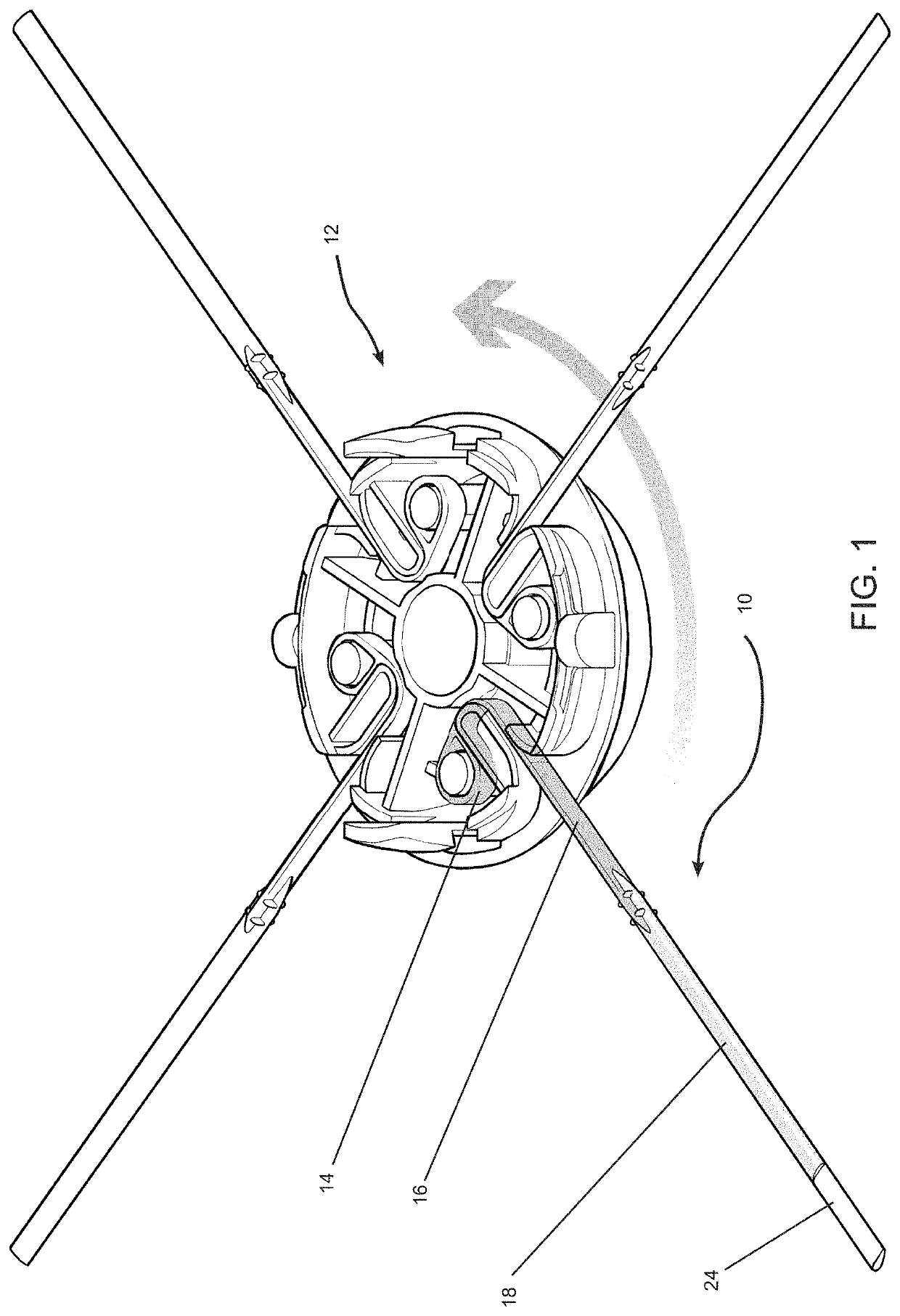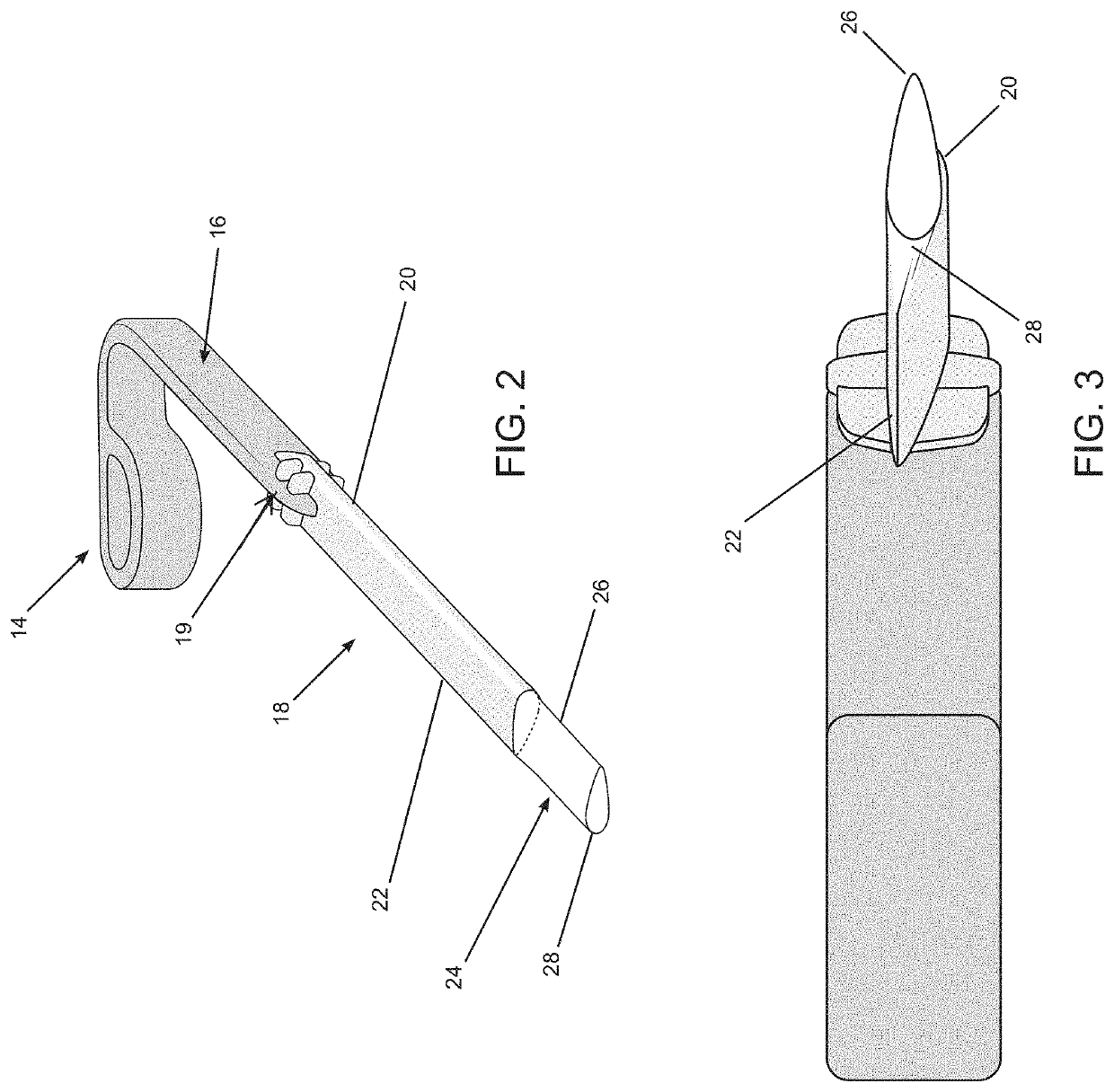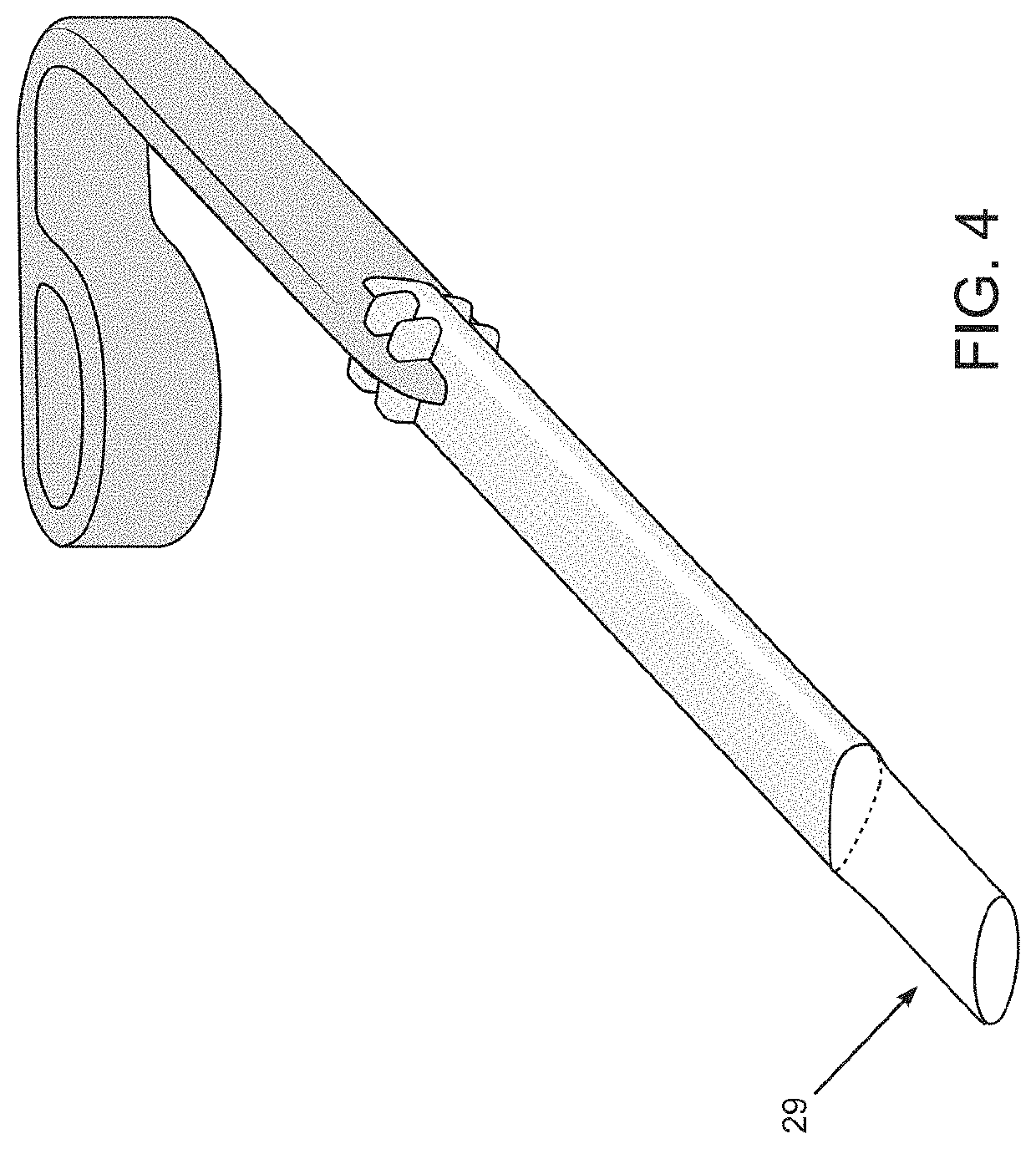Multi-zone cutter elements for grass trimmers, rotary mowing, and other heavy vegetation cutting applications
a technology of rotary mowing and grass trimmer, which is applied in the direction of mowers, agriculture tools and machines, etc., can solve the problems of inability to cut, poor cutting quality and performance, and inability to use the monofilament line, so as to improve the cutting performance, improve the cutting quality, and improve the ergonomics
- Summary
- Abstract
- Description
- Claims
- Application Information
AI Technical Summary
Benefits of technology
Problems solved by technology
Method used
Image
Examples
Embodiment Construction
[0028]With reference to the drawings, a line blade 10 is securable in a cap 12 or the like for rotation on a cutting plane with a head of a rotating trimmer. The cap 12 may form part of the head or may be attachable to an existing trimmer head.
[0029]The line blade 10 includes a loading section 14 that is securable to the head or cap 12 of a rotating trimmer. The loading section 14 may comprise any suitable construction for connecting the blade 10 to the cap / head 12. The exemplary loading section 14 shown in FIG. 1 is described in U.S. Pat. No. 9,474,205, the contents of which are hereby incorporated by reference.
[0030]A living hinge 16 extends from the loading section 14. The living hinge 16 is flexible to accommodate operating parameters of the line blade 10 and rotating head. The amount of flex in the flexible living hinge 16 is variable according to many factors, including, for example, swath diameter, hinge thickness, hinge length, material flex modulus, blade mass, tip speed, c...
PUM
 Login to View More
Login to View More Abstract
Description
Claims
Application Information
 Login to View More
Login to View More - R&D
- Intellectual Property
- Life Sciences
- Materials
- Tech Scout
- Unparalleled Data Quality
- Higher Quality Content
- 60% Fewer Hallucinations
Browse by: Latest US Patents, China's latest patents, Technical Efficacy Thesaurus, Application Domain, Technology Topic, Popular Technical Reports.
© 2025 PatSnap. All rights reserved.Legal|Privacy policy|Modern Slavery Act Transparency Statement|Sitemap|About US| Contact US: help@patsnap.com



